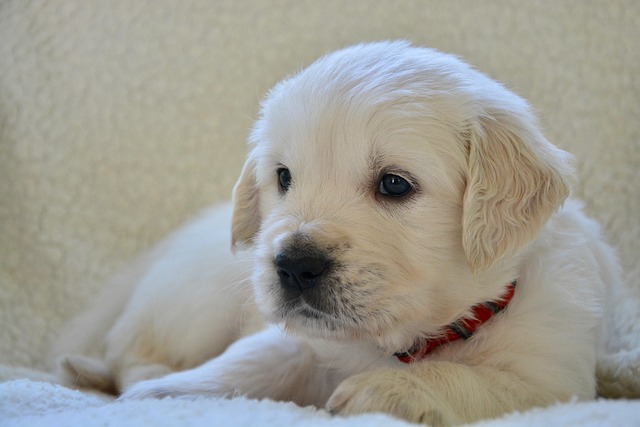
What is glaucoma in a dog?
You might notice your dog squinting more at mealtime or avoiding bright sunlight—these small changes could be early signs of a serious eye condition.
Imagine you’re in your Chicago apartment, brushing your 1-year-old Corgi, Bella, when your comb snags on something rough. You part her golden fur and freeze—small, crusty bumps dot her back, near her shoulders, and when you touch one gently, she pulls away with a whimper. Panic sets in: Did she get into something toxic? Is this contagious? If you’re a new US dog owner, this mix of worry and confusion is totally relatable. Scabby bumps under a dog’s fur aren’t “normal,” but they’re almost always fixable—once you know the common causes and how to respond, even in a small apartment.
First, let’s break down the top reasons (no fancy jargon here). The most likely culprits are flea bites, allergic reactions, or minor bacterial infections. Fleas (even in apartments!) bite to feed, and Bella’s scratching to stop the itch can break her skin—those breaks then scab over. Allergies (to dust mites in your couch, pollen from walks, or even chicken in her kibble) trigger itchy red bumps that turn scabby when she licks or chews them. Bacterial infections often start from a tiny cut—like from a sharp toy or a scratch on the sidewalk—that gets dirty. My vet in Austin explains it simply: “Bumps and scabs are your dog’s way of yelling, ‘This hurts!’ They don’t just appear out of nowhere.” A neighbor learned this with her Lab mix, Max: His bumps were from fleas he picked up in the building lobby, even though he only went outside for potty breaks.
Here’s how to figure out what’s bothering Bella, step by step, in your apartment. First, do a close inspection: Put on disposable gloves and part her fur all over—look for fleas (tiny brown bugs) or flea dirt (black specks that turn red on a wet paper towel). Check her belly and paws too—fleas love warm, hidden spots. Second, clean her space: Vacuum your rug, couch, and Bella’s bed (use a pet-safe bag) to kill flea eggs—apartment furniture traps these pests easily. Wash her bed in hot water (140°F or higher) weekly; this zaps any remaining bugs or dust mites. Third, try gentle home care: If you don’t see fleas, use a vet-recommended hypoallergenic shampoo for her next bath (skip human shampoo—it dries her skin!). Pat her dry (rubbing irritates scabs) and reward her with a freeze-dried chicken treat—positive reinforcement keeps her calm while you care for her. If the bumps don’t fade in 3 days, call your vet—bring photos of the scabs to help them diagnose faster. My cousin in Seattle did this with her Shih Tzu: The vet found her bumps were from a dust mite allergy, and regular vacuuming + a medicated spray cleared them up.

Now, let’s tie in US rules and pet culture you can’t ignore. First, compliance: Never let Bella’s rabies vaccine lapse, even while treating her bumps—Illinois requires puppies to get their first dose by 4 months old, and adult dogs need boosters every 1–3 years. A skin issue weakens her immune system, making unvaccinated dogs more at risk for other illnesses. When you walk her, always bring poop bags—Seattle fines $250 for uncollected waste, and a clean neighborhood means fewer fleas and ticks that cause bumps. Second, apartment and community manners: If Bella’s bumps are from fleas, tell your building manager—they can treat shared spaces like lobbies to protect other dogs. Skip dog parks until her scabs heal; other dogs might lick her irritated skin, and she could pick up more pests. Third, cultural musts: Never scold or punish Bella for scratching—US pet culture rejects fear-based treatment. She’s not “misbehaving”—she’s in pain. Instead, distract her with a soft toy when she starts scratching, and talk to her in a calm voice.
In a week or two, Bella’s scabs will start to heal, and she’ll stop hiding when you reach for the brush. Remember: Scabby bumps are a problem, not a disaster. The key is to act fast, keep her space clean, and turn to your vet when you’re unsure—you’ve got this.

You might notice your dog squinting more at mealtime or avoiding bright sunlight—these small changes could be early signs of a serious eye condition.

Let’s set the scene: It’s a sweltering Phoenix afternoon—105°F outside—and you rushed your 2-year-old Lab mix, Cooper, on a quick walk to “get it over with.”

Let’s get real: You’re in your Miami apartment, watching your 3-year-old Corgi, Loki, struggle to climb the stairs to your second-floor unit.

Many dog owners brush off occasional scratching as just “dog behavior,” but persistent itching often signals something more—like a food allergy.

You might first notice your dog scratching more than usual—chewing at their paws until the fur looks thin, or rubbing their face against the couch nonstop.

Let’s be real: You’re standing in your Chicago apartment, watching your 3-year-old Beagle, Max, huff and puff just to climb onto the couch.